Simba Roars with Relationism: A Unique Style of Play in African Football
The ability to quickly spot and exploit space left by the opposition is key
Simba, as a club, has always centered around players' relationships and partnerships on the pitch. This is what creates excitement around the team. Therefore, it is crucial for new signings to quickly become part of the team's family.
They need to get to know their teammates well, form relationships both on and off the pitch, and settle in easily so that they don't look out of place when playing. This has been the case with Jean Othos Baleke, who was signed from TP Mazembe in January.
Jean Baleke celebrates with head coach Robertino after scoring a brace against IHEFU S.C. in the NBC Premier League. Image by Simba SC.
The functional style of play differs from positional play, which has been popularized by Pep Guardiola. In positional play, players occupy certain zones and wait for the ball to arrive, while in functional play, the ball acts as a reference to find the space.
Lately, this style has been influenced by Fernando Diniz, who describes it as "an apositional style." This means that the focus is not on arranging players in certain positions, but rather on their relation to the ball. Successful teams such as Real Madrid, Scaloni's Argentina, and Spalleti's Napoli share a similar basic idea.
Simba is a master of this style, influenced by their star player, Clatous Chota Chama.
Chama always positions himself in relation to the ball, and he is ready to move to spaces where the positional system would not prefer him to be.
He doesn't follow the space as much as he follows where he thinks the ball will be and where he can use it to affect the game. This is demonstrated in situations such as throw-ins, where he generates better pass quality and creates opportunities in the ball's zone.
Chama exchanges the pass with Ntibazonkiza, who is playing behind the striker, before leading to the foul. Chama opened the score line from a free kick.
If Chama had not moved from the left wing to the position related to the throw-in, it could have been difficult to lead that passage which led to the foul on the edge of the box.
His movement on the ball and exchange of passes on the right side helped in the opening, but in positional play, it would be challenging for a left-winger to move to the central position, almost on the so-called half spaces of the other wing position, without any rotation or someone occupying his vacated space.
Here, Mohamed Hussein is demonstrating the concept of being a rest defense or defensive diagonal. He doesn't provide width while the ball is on the right side.
But it is important to note that this defensive diagonal not only helps to prevent a situation where the team loses the ball, but it also creates an empty space on the left half of attack.
This makes the opposite side reduce the protection at that zone due to the man superiority at the right, and because without opposition players, the defensive player tends to be less focused on this part. Additionally, Hussein has an eye on the opposition winger as part of the rest defense strategy.
This concept of empty spaces and its use can be traced back to Brazil’s 1958, where Zagallo, a 'ponta recuado' (meaning 'retreated winger'), moved from the left wing to inside to generate empty spaces. Later, Nilton Santos or Pelé would attack, taking advantage of the lack of protection from such a move.
The use of this concept evolved over the years, mainly in South America, and the functional play likes to appropriate this strategy to the maximum.
Ntibazonkiza attacks the inside of the midfield with the ball, while Mohamed Hussein attacks the empty space.
Mohamed Hussein is often used as a defensive diagonal on numerous occasions, especially as he has a good change of speed from the back when attacking the space left free.
The image shows Gadiel Michael speeding towards the left side, which is free after Raja players were dragged to the right side due to a tilt from Simba.
Simba is a team that relies on relationism, where the ability of its players to quickly spot and exploit space left by the opposition is key.
Above is an image showing the tilting position of Simba players against Horoya in the Champions League.
Robertino's Simba team relates around the ball, organizing themselves with a lot of close references. Each player is an invitation for the next pass.
Their style of play revolves around the players' ability to read and interpret spaces on the pitch, rather than being confined to a specific position or system. This allows for quick and fluid movements, with players inviting each other for passes and exploiting spaces left by the opposition.
This approach requires a high level of intelligence and combination play, which Simba's players like Chama and Ntibazonkiza possess.
Spalletti's famous quote about systems no longer existing emphasizes the importance of understanding spaces on the pitch rather than relying solely on a predefined system.
These two videos demonstrate the same movements in the same game, involving a number of players and a lot of combination play, which enable Simba to exploit the spaces left by the opposition. The players focus on their relation to the ball rather than on the vacated spaces.
Robertinho is a Brazilian coach who employs functional play strategies and has roots in Brazilian football. Simba's tactical organization is heavily influenced by traditional Brazilian functions. It is important to understand the different roles of some players in the Simba squad.
Simba’s lineup which consists of players who have built up a strong relationship on the pitch.
Jean Bakele is an in-form striker who plays an outstanding role in making the team perform better as a center forward, but with the freedom to drop down and help in the build-up. This is important as it generates spaces for another attacking midfielder to join the attack with diagonal movements.
Ntibazonkiza and Chama are attacking midfielders with different roles, with Chama being more creative and Ntibazonkiza being focused on dribbling, while Kibu Denisi operates as a "third man". Kanoute is a defensive midfielder, while Yassin is more like a "segundo volante".
"Segundo volante" in Brazil means something close to a "second defensive midfielder", although the midfielder has defensive roles, they must also be capable of bursting forward. This is what Mzamiru Yasini is all about; not a player operating in a specific position, but rather a functional player.
Third man" or "terceiro homem do meio campo" (don’t confuse with the third man run or movement) is a role that is usually performed by a winger, defensive winger or midfielder. The player helps in the build-up by being an option for association and is the last player to attack the penalty area. Kibu Denisi performs this role.
Kibu is more known for his physicality and ability to put in a shift for the team when they are out of possession, whether the team is pressing high or defending with a mid or low block. However, his importance in possession cannot be overlooked.
Kibu participates in the build-up phase, as in this image below where he drops down (but the pass was made to Ntibazonkiza on the right-wing).
But this is more important: the image below shows Kibu as the last player to attack the box after Baleke, Ntibazonkiza, and Chama were already making runs. Being the last to arrive gave him space to receive the ball and take a shot, which led to a rebound that Baleke finished off.
Another example is a faster build-up after a Horoya's attack. This camera angle may not be the best, but it is one of the few that could show more aspects of the play.
While other attackers were moving towards one area, Kibu waited to become an option and received the ball, which helped in the progression of the ball.
Simba is known for their fast-paced style of play, facilitated by the sharp decision-making skills of their players. They coordinate well to execute one-touch plays, take up different positions, and adjust their tempo according to the situation.
The team adopts a patient approach without the ball, often marking from their own half. When in possession, they mix it up with short build-ups, direct attacks, and quick transitions.
Their success on the pitch revolves around their players' rapport. They prioritize the discovery of open space in relation to the ball, which has become their unique style of play. Their star player, Clatous Chota Chama, constantly positions himself in favorable spaces to impact the game.
Simba's agility in identifying and capitalizing on gaps in their opponents' defenses is crucial to their victories.
PS: Kindly follow us on twitter @playbookpro_

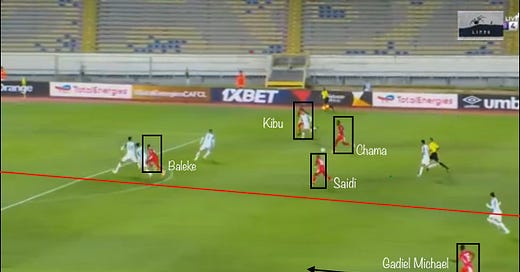



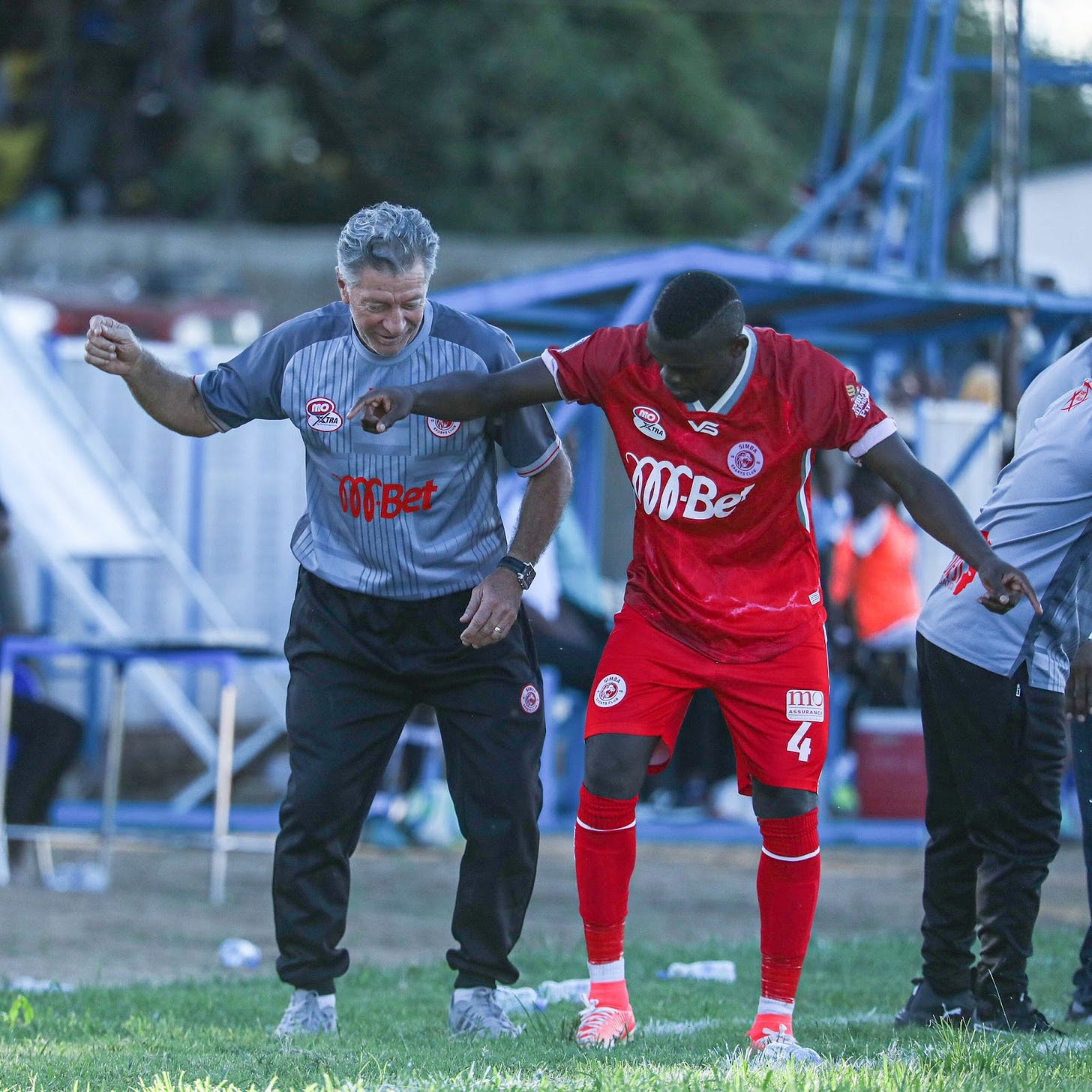
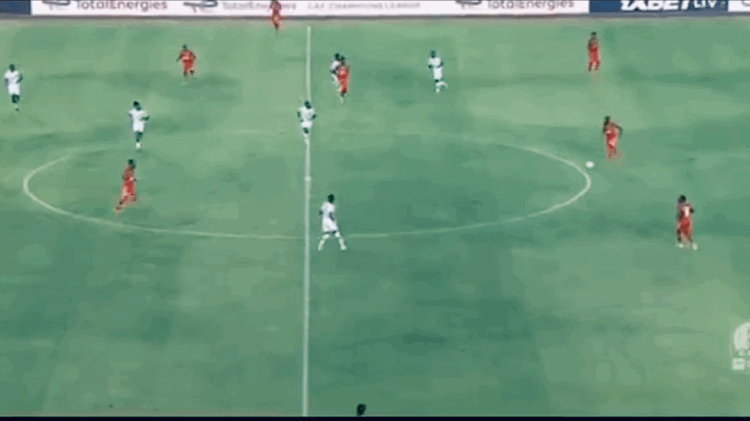

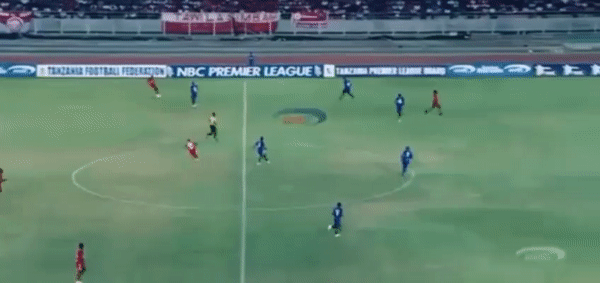


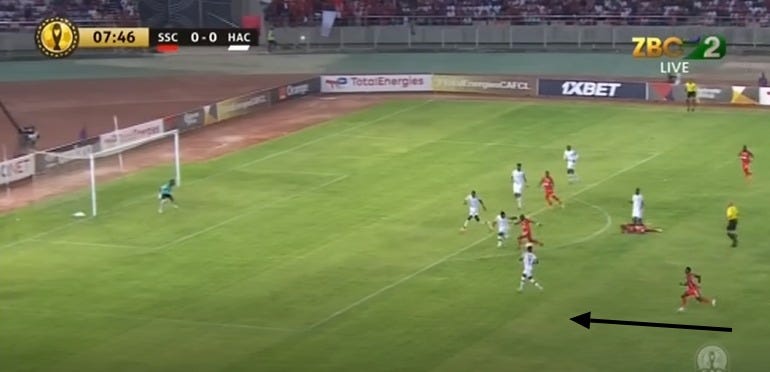

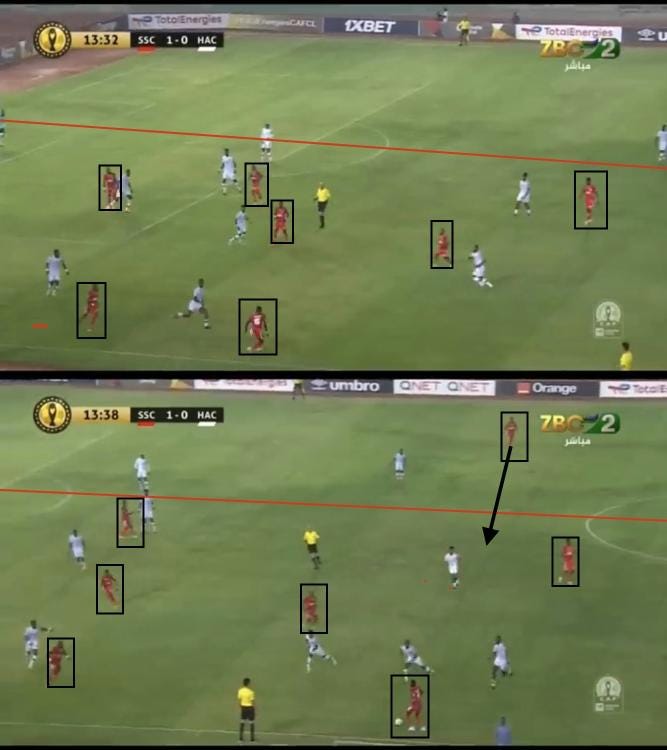
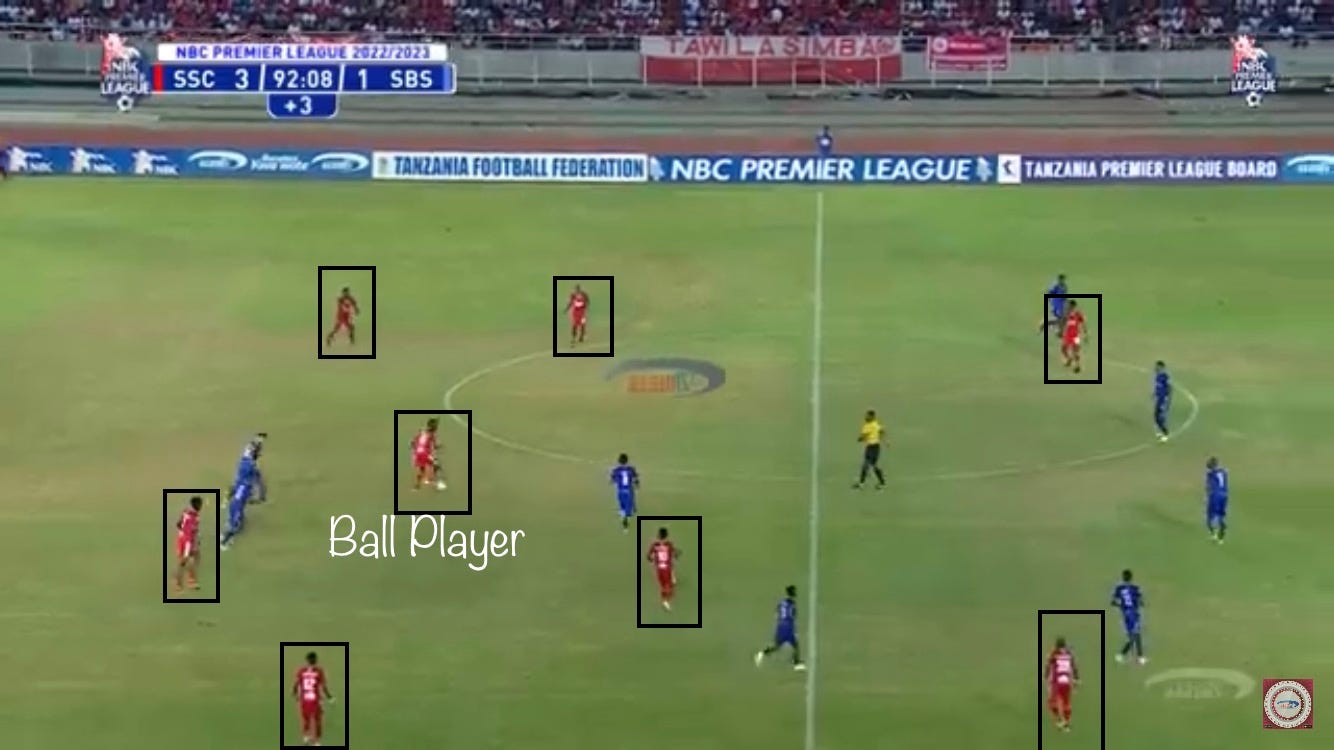
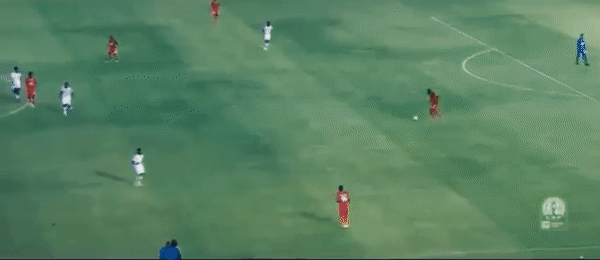

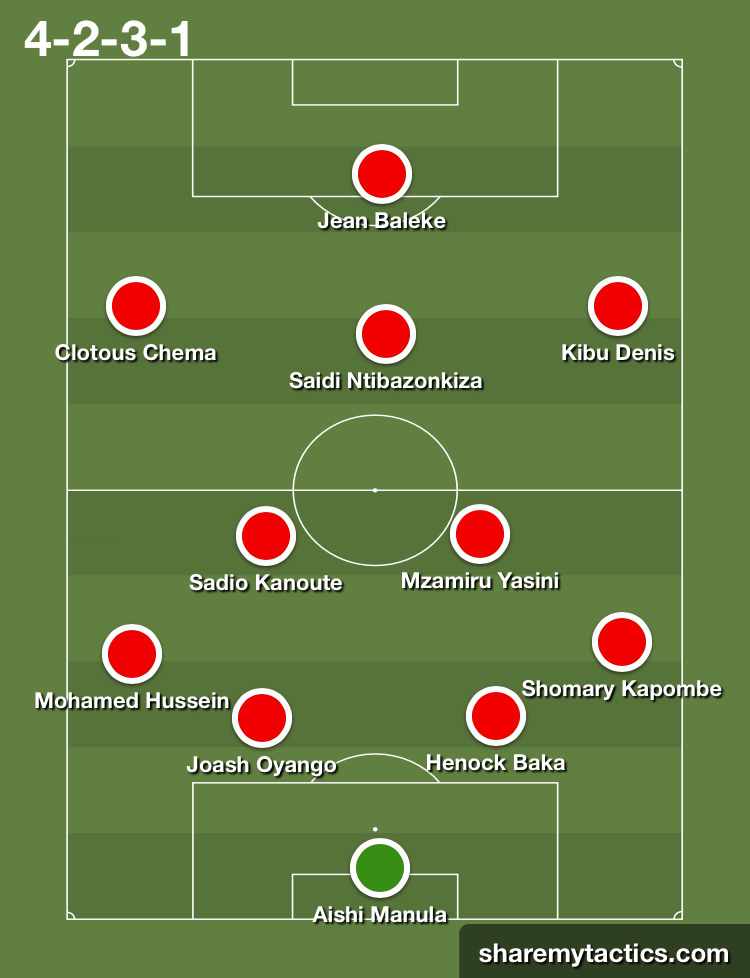
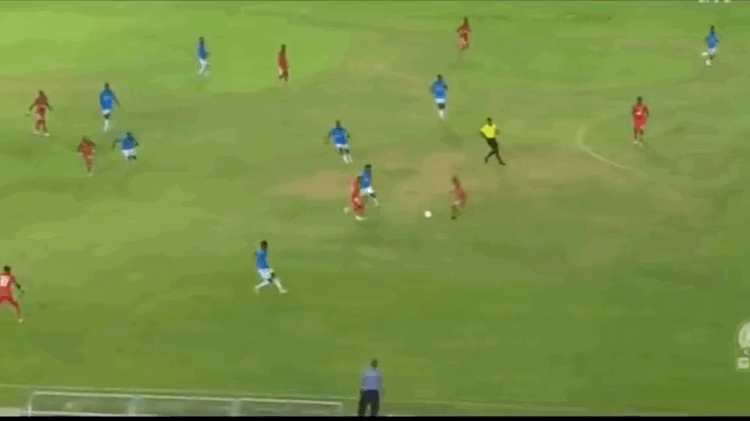
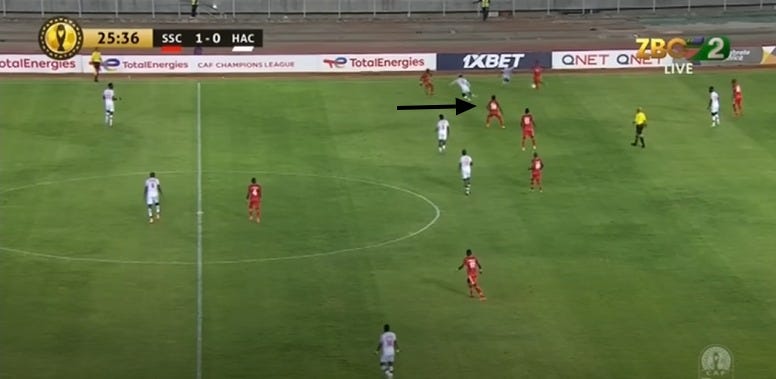
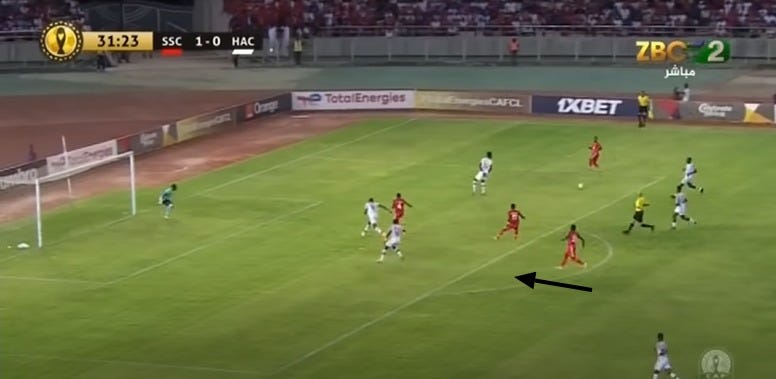
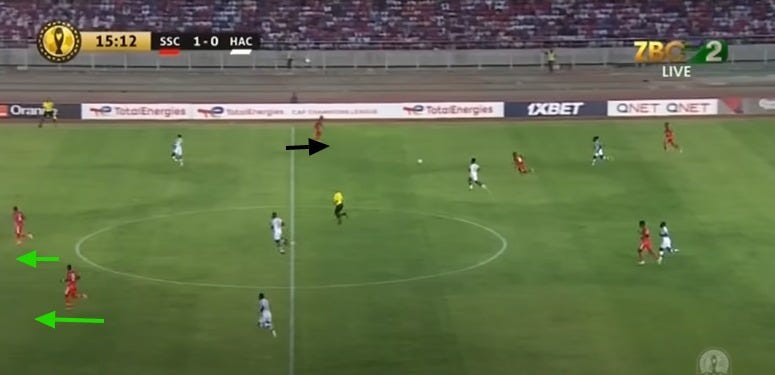

Fantastic work, congratulations👏👏
Despite the challenges you are going/facing through, let the videos be improved in a better quality than that......👍
A good piece of work. Congratulations. I would like to know from your analytical details, what differentiates Baleke from Moses Phiri, and what makes Baleke the favorite over Phiri. Thanks in advance.